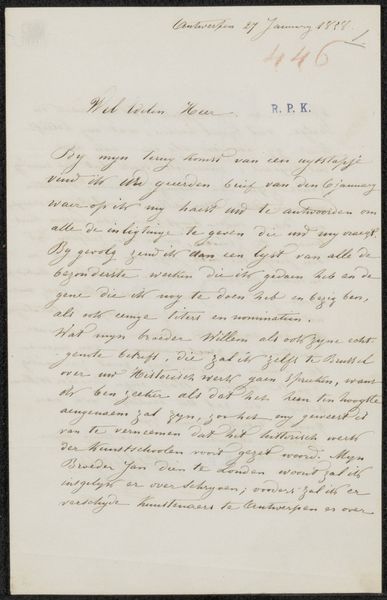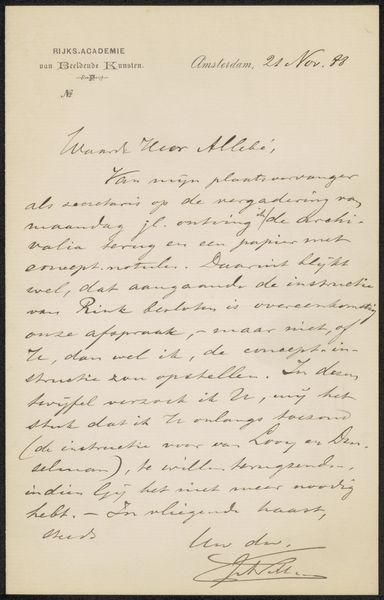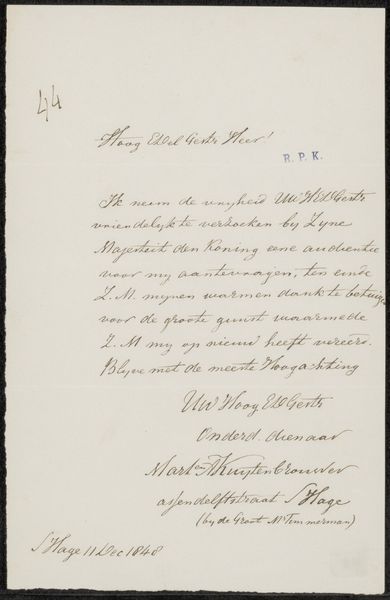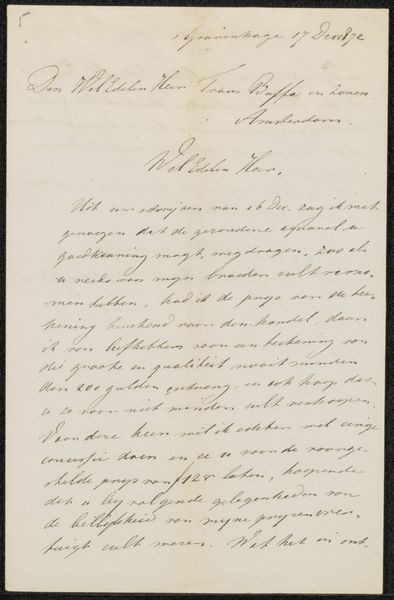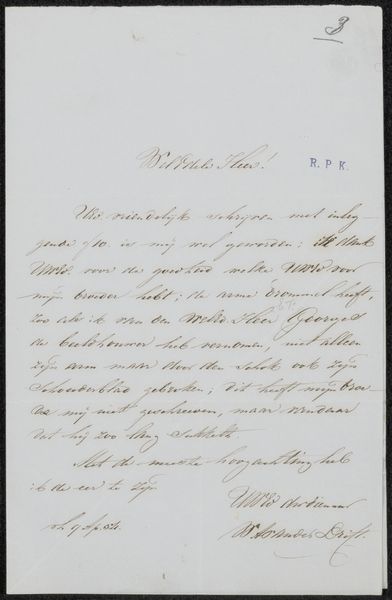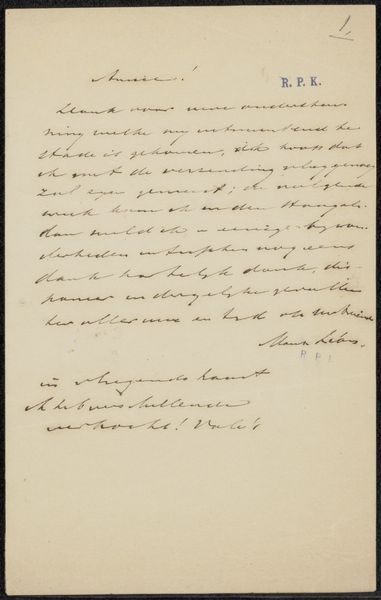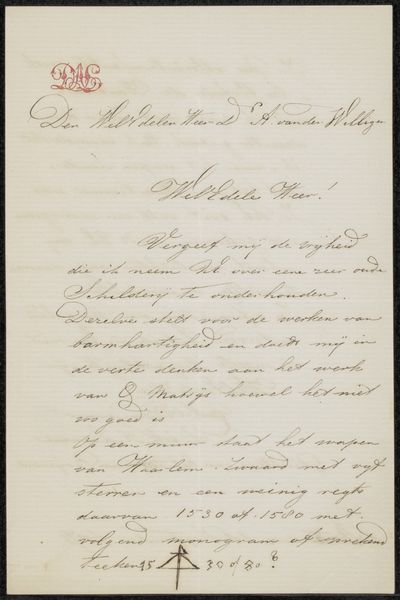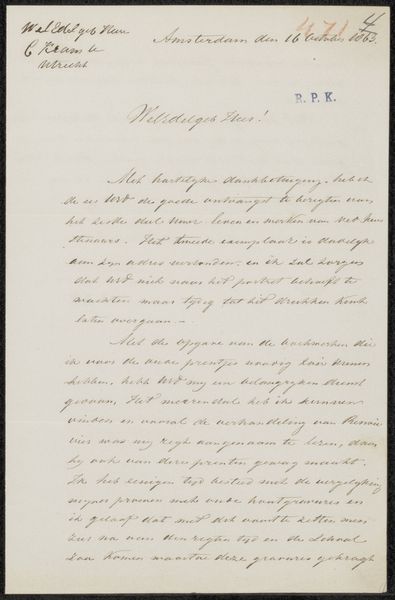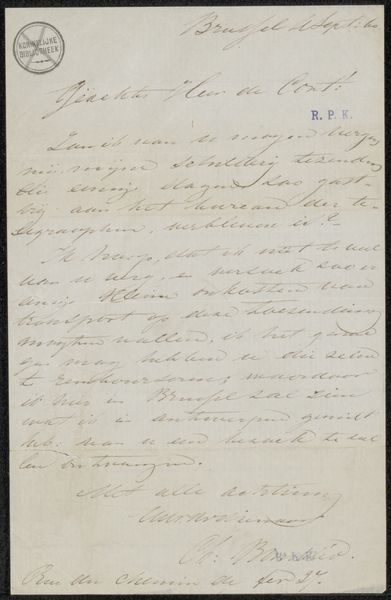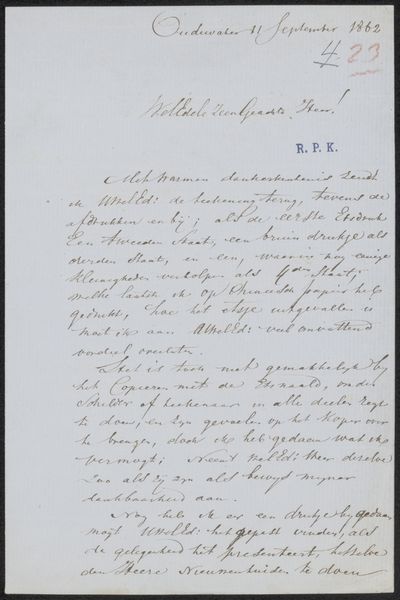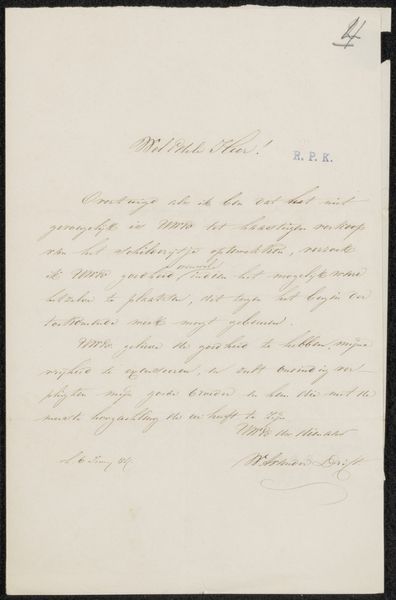
drawing, paper, ink, pen
#
drawing
#
paper
#
ink
#
pen
Copyright: Rijks Museum: Open Domain
Curator: Looking at this "Brief aan Frans Buffa en Zonen," likely from around 1864 to 1867 by Johann Wilhelm Kaiser, the thing that jumps out is its formality, or perhaps faux formality. It has the veneer of being very serious. Editor: It reads like an intimate historical document. I am fascinated by its physicality—the texture of the paper, the slightly faded ink made with a pen. Letters always hint at both accessibility and exclusion. We can look at it now, but it was made for a select few to see. Curator: Exactly. Kaiser seems to have created this as a business communication on paper in ink. It’s a peek into the Dutch art world, a request, even though at first it reads very formally and politely. The artist R.P.K. also made additions to the document; maybe Kaiser passed the document onto another? Editor: I'm drawn to what this letter says about art and commerce, but more broadly about the means and modes that allow for a circulation of knowledge. Whose work is privileged here? Whose is relegated to the level of ‘model?’ Is R.P.K’s addition a mark of approval or disapproval? Curator: That's the interesting part, isn't it? It invites us to become a bit of a detective, sifting through the intentions. The purpose appears to be something quite practical— the lending of a copy of the 'Night Watchman by Hollander' so that Kaiser could get an 'engraving.' And from this one humble communication, we speculate to unearth relationships and perhaps rivalries. Editor: There's something almost subversive about transforming personal letters into objects of public scrutiny. In a sense, aren't we repeating the initial act, only on a grander scale? This also tells me the story about how much our interpretations of art are dictated by systems and people behind the work of art. We add significance in ways that can potentially ignore its original use. Curator: And it's delightful to consider that tension, this ordinary-but-revealing letter, has become a portal into another time, even with all our assumptions and interpretations attached. Editor: Precisely. A poignant reminder that history is rarely clear-cut; rather, it is composed of tangled and multifaceted narratives waiting to be disentangled.
Comments
No comments
Be the first to comment and join the conversation on the ultimate creative platform.
